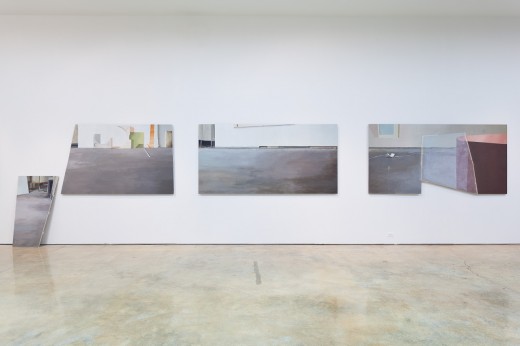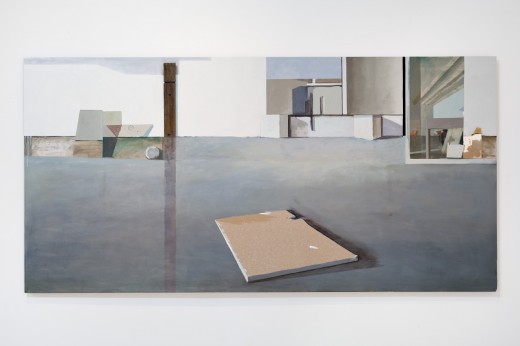Jenny Brillhart, Noonday
Hunter Braithwaite

A detail of Jenny Brillhart's Noonday.
March 14, 2014 – April 19, 2014
Over the past few years, Jenny Brillhart has spent a lot of time in her studio, watching Miami’s light dredge its way through dust and bits of wood and drywall. Her art moves from sculpture with painting to painting with sculpture to one or the other completely, and is both large and small, but certain constants remain. She renders our diffuse interiors—generic, nondescript spaces of work and life—in a way that draws attention to how the room mirrors the mind, how it can become the mind. Brillhart’s painting exists in the American lineage of Charles Sheeler’s eggshell blues and robin-egg whites, Edward Hopper’s emotive drafts, and Richard Diebenkorn’s fractured suburban landscapes. But before we get carried away, they speak also to Miami’s temporary architecture—to all those low ceilings and sheets of drywall—and the subjectivities dwelling within.

Noonday, Installation view

Jenny Brillhart,Noonday, 2014. Oil and mixed media on drywall, 4 x 8 feet. Image courtesy: Emerson Dorsch
That said, I don’t think her conflation of subject and material is a conceptual ploy. It seems a bit older than that, an admittance that the objects represented often define how they are represented. Keeping that in mind, Brillhart doesn’t settle in reproducing generic spaces in generic ways. With focus and careful attention to everything within her purview, she cuts through the haze of placelessness and arrives at a room of her own.










